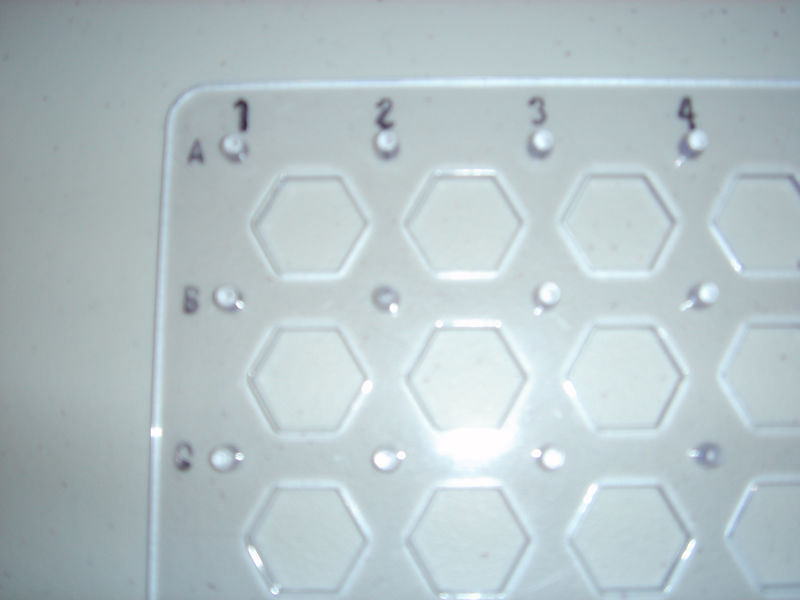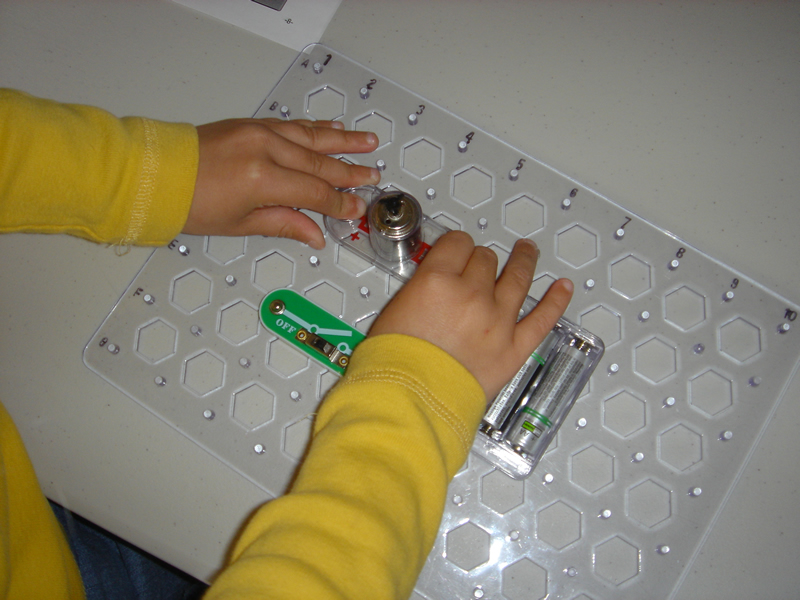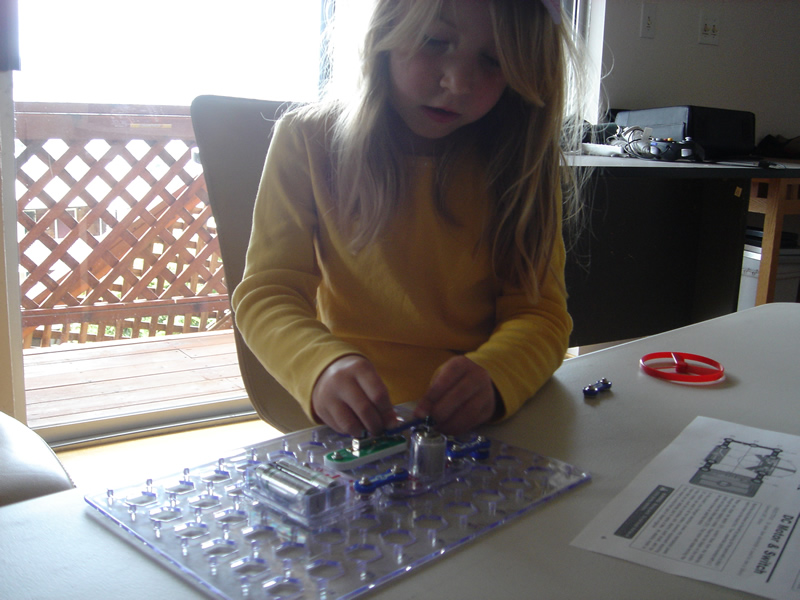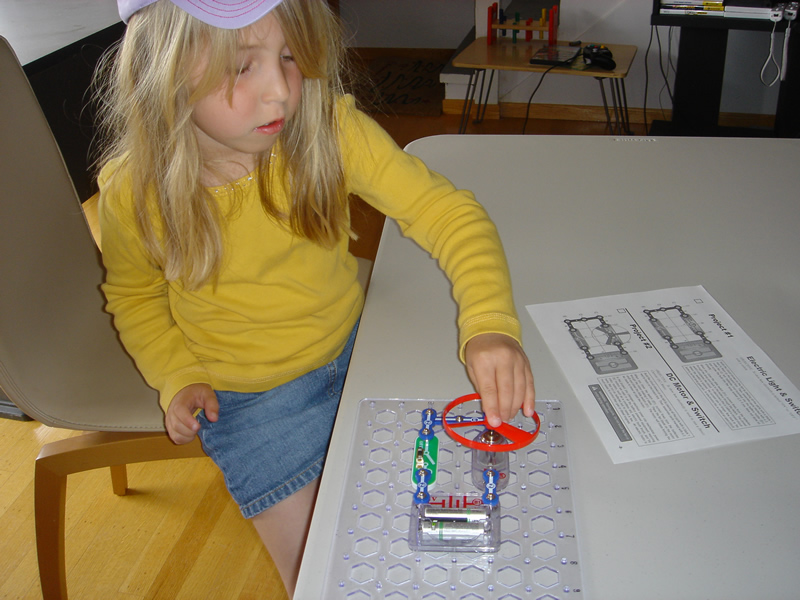One year ago, you were reading this by Jeffrey McManus:
From KidScientist.com, the no-nonsense science blog for kids
Principal Investigator: Celeste
Research Assistant: Jeffrey
Date: April 21, 2007
This weekend we decided to do another experiment with a science kit. This time we used a Snap Circuits Jr. electricity set to create a motorized fan. To our surprise, when we flipped the switch, the fan propeller ran for a moment, then suddenly launched itself into the air and flew across the room.
This experiment has three separate areas of science and math: The electrical circuit (to make the fan go), the part that makes the fan take off (called aerodynamics), and the grid that we use to build the electrical circuit (which a mathematician would call a Cartesian coordinate system, but we just refer to as "the grid").
The Snap Circuits Jr. kit is an excellent way for kids to learn about electricity. It makes it easy to create electrical circuits without having to do any wiring. The set comes with a plastic grid with pegs on it that lets you easily snap various parts into place. These parts include motors, switches, lamps, noisemakers, and connectors (which take the place of wires).
To build the electric fan, we followed the instructions in the kit. We started by laying out the pieces we needed, including the propeller, the fan motor, an on/off switch, and about six connectors.
One of the things we learned when putting together contraptions with the Snap Circuits Jr. set is that you need to build a circuit — a complete circle of connectors going into and out of the batteries — to power something using electricity. The instructions make it pretty easy to put a circuit together by mounting the various pieces on the grid, but we found it a little hard to read the numbers and letters on the grid’s coordinate system. So we made them a little darker by drawing over them with a Sharpie marker.
Once we could read the coordinates on the grid, it was simple to put the components in place. We started with the batteries and the switch.
After that we snapped the fan motor into place. Nothing’s happening with our contraption yet because there’s no circuit — there’s no way for the electricity to travel through the fan motor to give it power.
Here we have all the components in place and we’re completing the circuit with connectors.
Finally we have our circuit, so all we need to do now is place the fan on top of the motor and throw the switch.
Here’s a picture of the fan running. The fan only ran for a few seconds before it vibrated loose from the motor and flew across the room. We know that fans that spin around fast enough are pushing air downward, which makes the fan want to move in the opposite direction. In this case, the air goes down, so the fan wants to go up.
We didn’t expect to see the fan fly into the air, though. This is the kind of result that scientists refer to as "exciting and unexpected". When scientific investigators announce exciting and unexpected results, they are usually either ridiculed, given large research grants, or both.
The fan launching itself across the room was so exciting that we decided to make a video of it for your enjoyment.
I










